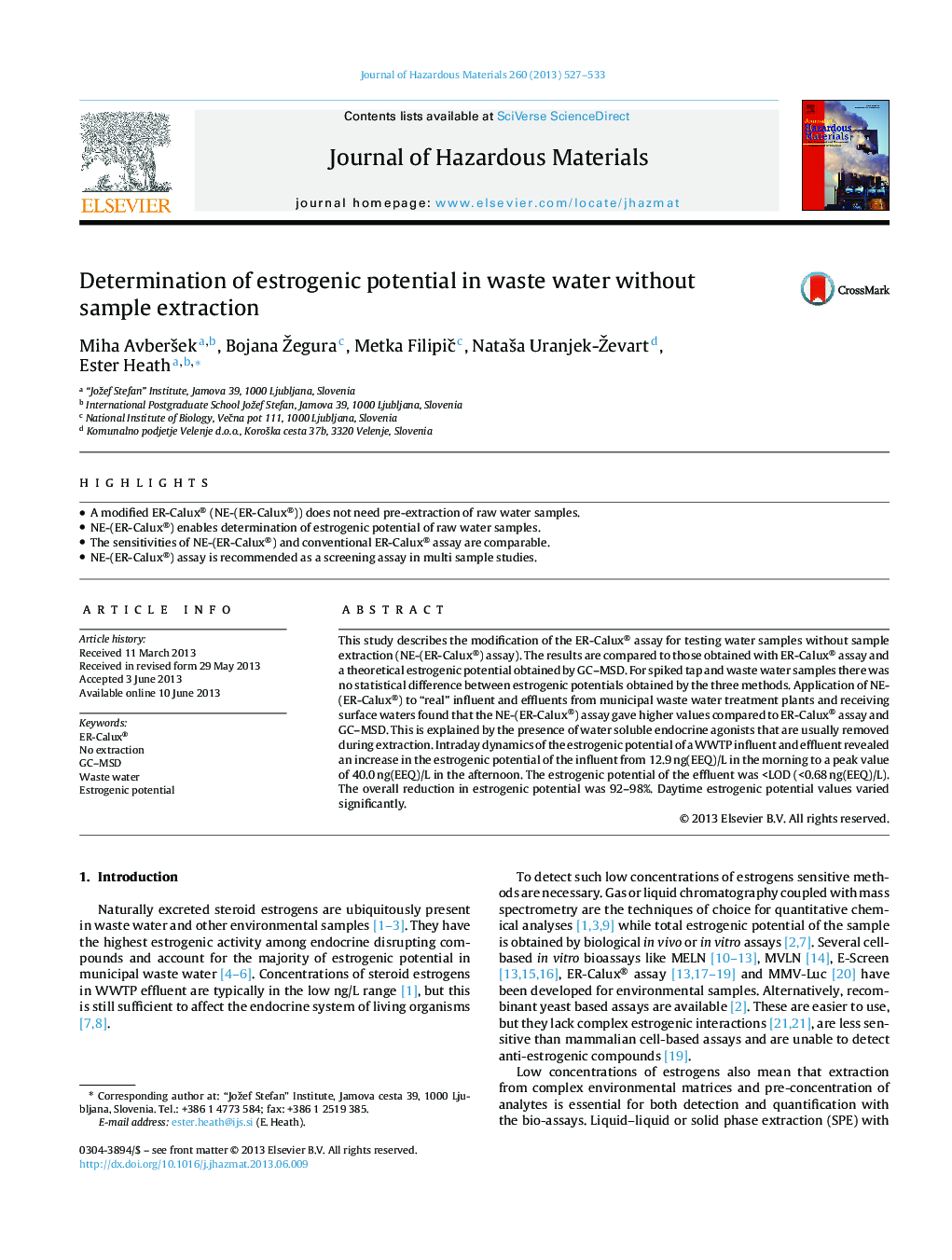| Article ID | Journal | Published Year | Pages | File Type |
|---|---|---|---|---|
| 6972414 | Journal of Hazardous Materials | 2013 | 7 Pages |
Abstract
This study describes the modification of the ER-Calux® assay for testing water samples without sample extraction (NE-(ER-Calux®) assay). The results are compared to those obtained with ER-Calux® assay and a theoretical estrogenic potential obtained by GC-MSD. For spiked tap and waste water samples there was no statistical difference between estrogenic potentials obtained by the three methods. Application of NE-(ER-Calux®) to “real” influent and effluents from municipal waste water treatment plants and receiving surface waters found that the NE-(ER-Calux®) assay gave higher values compared to ER-Calux® assay and GC-MSD. This is explained by the presence of water soluble endocrine agonists that are usually removed during extraction. Intraday dynamics of the estrogenic potential of a WWTP influent and effluent revealed an increase in the estrogenic potential of the influent from 12.9Â ng(EEQ)/L in the morning to a peak value of 40.0Â ng(EEQ)/L in the afternoon. The estrogenic potential of the effluent was
Related Topics
Physical Sciences and Engineering
Chemical Engineering
Chemical Health and Safety
Authors
Miha AvberÅ¡ek, Bojana Žegura, Metka FilipiÄ, NataÅ¡a Uranjek-Ževart, Ester Heath,
